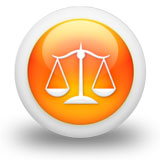We need your consent to use the individual data so that you can see information about your interests, among other things. Click "OK" to give your consent.
ASTM C1421-10
Standard Test Methods for Determination of Fracture Toughness of Advanced Ceramics at Ambient Temperature
STANDARD published on 1.12.2010
The information about the standard:
Designation standards: ASTM C1421-10
Note: WITHDRAWN
Publication date standards: 1.12.2010
SKU: NS-11183
The number of pages: 31
Approximate weight : 93 g (0.21 lbs)
Country: American technical standard
Category: Technical standards ASTM
Annotation of standard text ASTM C1421-10 :
Keywords:
advanced ceramics, chevron notch, fracture toughness, precracked beam, surface crack in flexure, Fracture testing--advanced ceramics, Precracked beam, Surface crack in flexure, Advanced ceramics, Ambient temperature, Chevron notched specimen, Cracking--ceramics, Flexural testing--ceramics, ICS Number Code 81.060.30 (Advanced ceramics)
Additional information
| Significance and Use | ||||||||||||||||||||||
|
Fracture toughness, KIc, is a measure of the resistance to crack extension in a brittle material. These test methods may be used for material development, material comparison, quality assessment, and characterization. The pb and the vb fracture toughness values provide information on the fracture resistance of advanced ceramics containing large sharp cracks, while the sc fracture toughness value provides this information for small cracks comparable in size to natural fracture sources. Cracks of different sizes may be used for the sc method. If the fracture toughness values vary as a function of the crack size it can be expected that KIsc will differ from KIpb and KIvb. |
||||||||||||||||||||||
| 1. Scope | ||||||||||||||||||||||
|
1.1 These test methods cover the fracture toughness, KIc, determination of advanced ceramics at ambient temperature. The methods determine KIpb (precracked beam test specimen), KIsc (surface crack in flexure), and KIvb (chevron-notched beam test specimen). The fracture toughness values are determined using beam test specimens with a sharp crack. The crack is either a straight-through crack formed via bridge flexure (pb), or a semi-elliptical surface crack formed via Knoop indentation (sc), or it is formed and propagated in a chevron notch (vb), as shown in Fig. 1. Note 1—The terms bend(ing) and flexure are synonymous in these test methods. 1.2 These test methods are applicable to materials with either flat or with rising R-curves. Differences in test procedure and analysis may cause the values from each test method to be different. For many materials, such as the silicon nitride Standard Reference Material 2100, the three methods give identical results at room temperature in ambient air. 1.3 The fracture toughness values for a material can be functions of environment, test rate and temperature. These test methods give fracture toughness values for specific conditions of environment, test rate and temperature. 1.4 These test methods are intended primarily for use with advanced ceramics which are macroscopically homogeneous. Certain whisker- or particle-reinforced ceramics may also meet the macroscopic behavior assumptions. Single crystals may also be tested. 1.5 This standard begins with a main body that provides information on fracture toughness testing in general. It is followed by annexes and appendices with specific information for the particular test methods. |
||||||||||||||||||||||
| 2. Referenced Documents | ||||||||||||||||||||||
|
We recommend:
Updating of laws
Do you want to be sure about the validity of used regulations?
We offer you a solution so that you could use valid and updated legislative regulations.
Would you like to get more information? Look at this page.




 Cookies
Cookies
